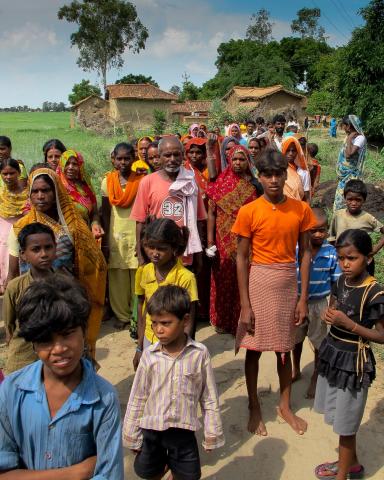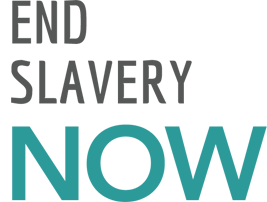When you read about the suffering of people in slavery, it is hard to conceive how anyone who survives slavery could ever hope to recover and lead a normal life. Both historic slavery and modern day human trafficking inflict seemingly unbearable suffering, torture, starvation, rape, relentless physical labor and psychological torture.
When I first started working with aftercare programs that help people rescued from slavery, I did not understand how survivors of this kind of abuse could ever move forward and have a normal life. Working at Made By Survivors, I’ve been fortunate to see how wrong my preconceptions were. I have been constantly amazed at the healing power that comes from the innate human desire to live a normal happy life, to have a family, and to keep your children safe.
Good aftercare programs are successful because they help the survivors make these simple but powerful desires come true. There are many other important factors that we look for in great aftercare programs, but the single core element of all successful programs is that they offer the survivors not just hope, but a true path to having a normal life where they can rejoin society, earn a good wage, and raise a family.

Elements of Great Aftercare
Family Even in large shelter style aftercare programs, the better shelters know how to get survivors to live and work together as a family. More often than not, this family culture comes from the top when the program executives treat the survivors as their children, sisters or brothers. One of our partners - Apple of Gods Eye in Nepal - has built their entire program on a unique family structure. Instead of one large shelter building, Apple operates 6 individual houses with 30+ young survivors in each house. Each house is led by house parents that provide the security, stability and love that these traumatized kids need and crave most.
Education Many survivors are born into slavery or are trafficked at a young age. This usually means they have limited schooling, or none at all. All decent shelters provide education for survivors, but the best shelters have extremely high standards and expectations. Survivors are often very eager to learn and to catch up with their age’s grade level I’ve seen groups of young teen survivors who did not even speak the shelter’s primary language when they were rescued jump from illiterate to high school level education in only a few years.
Protection Balanced With Freedom Survivors are at high risk of being re-trafficked so they often need protection. They often have to unlearn dangerous behaviors, and no matter what their age, they are likely to act like teenagers and push the boundaries of safety as part of the psychological process of independence and self control. But, while protection is important, like all teenagers they also need an increasing level of freedom to make mistakes and learn how to be independent. If the protection stifles their independence, young survivors are much more likely to get into serious trouble. The best shelters provide a balance between protection and independence and use increased independence as a reward for personal responsibility.
Opportunity A good way to understand the power of opportunity is to imagine what survivors must think when they first enter Aftercare. Their enslavement is over, but they are still scared and powerless. But they are not alone. There are others that were there before them who have experienced the same horrors, but who are now happy and thriving. A social worker can tell a new survivor that things will get better and that she can have a strong future, but that is just words. The meaning behind the words becomes real when survivors see their peers working, moving out, getting married, and building a strong, happy future. The best aftercare programs don’t just provide opportunity. They expect the survivors to thrive.
Its important to note that not all opportunities are equally therapeutic. Slavery survivors are deeply stigmatized so when they return to their communities they will often return as outcasts with very low social status. At Made By Survivors, we believe that the best way to improve the social status of the survivors is to offer high income, high status careers. For someone who is simply poor, a steady low wage job can be life-changing. For the survivors however, this may not be enough. Because the stigma they face is so extreme, they need higher income jobs in order to overcome it. A woman who earns is respected in Asia (and almost everywhere). A good income helps community members to overlook a survivors’ past, and to see her potential as a contributing member of the community. This is why we seek out trades that are hard to learn and confer higher status. For example, in our jewelry and metalsmithing program we train jewelers, which is a multi year process resulting in high status, high wage employment. In 2015 we will be launching a veterinary care program that will provide good jobs for survivors and help address India’s problems with homeless and feral animals.
Other Aftercare Models
While most aftercare is in shelter homes, there are several innovative programs that take a different approach. For example, MSEMVS and Free The Slaves operate a program to free entire villages at a time from bonded labor slavery. (Whole villages can be enslaved in local industry like rock quarries or brick kilns, paying off ‘debts’ which are often decades old, and which only accrue over time). Gaining freedom for these villagers is more complicated than just removing the landlords. The whole village needs education and opportunity or else they will fall into deeper poverty or be vulnerable to violence and systemic discrimination or exploitation. To solve this problem MSEMVS takes many months preparing the community for the changes. When the community is ready as one to shake off the bonds of bonded labor, MSEMVS opens schools and employment centers and begins a multi year intervention to make sure the villagers become prosperous and independent, and that they can advocate for their own rights through government and legal channels.
Another innovative alternative to shelter-based aftercare is the program run by Freeset in Calcutta, India. When girls trafficked into the sex trade grow up, they have no alternative jobs or way to survive. With children of their own to support, they are now effectively enslaved by economics and the fact that they are outcasts, even though they may no longer be physically restrained, or prevented from leaving the red light area. Freeset employs several hundred women like this, right in the middle of a major red light district. Most of their employes have no work experience outside of the sex industry and their future is limited by the abuse of their past. By working at Freeset these women are not only able to choose a free and independent future, they are also creating a much brighter future for their children and helping to shift the economy of the area away from exploitation.
Its All About Prosperity
There are many factors that make communities vulnerable to human trafficking and slavery. Chief among them is poverty and lack of economic opportunity. While slavery can and does happen anywhere, for the most part, the best long- term solution is prosperity. This is true for rescued survivors, and equally true for people at high risk.
Prosperous parents do not send their kids away for jobs in the city, or sell their children to traffickers out of desperation. Prosperous families do not need to put their daughters into child marriages, which make them vulnerable to trafficking. Prosperous villages are not coerced into bonded labor slavery. Prosperous young people are not forced into red light areas or into dirty, dangerous, demeaning and unpaid jobs far from their homes. Prosperous people can make choices - for themselves and their children. They can rescue, support and uplift others who are exploited, ultimately helping us all get to a world free from slavery in all it’s forms.






